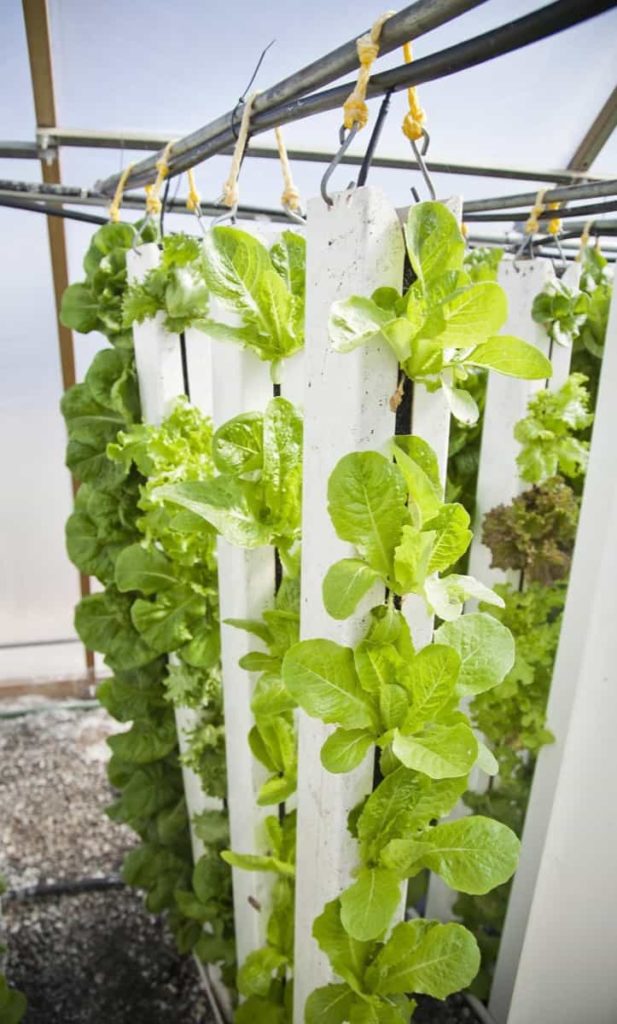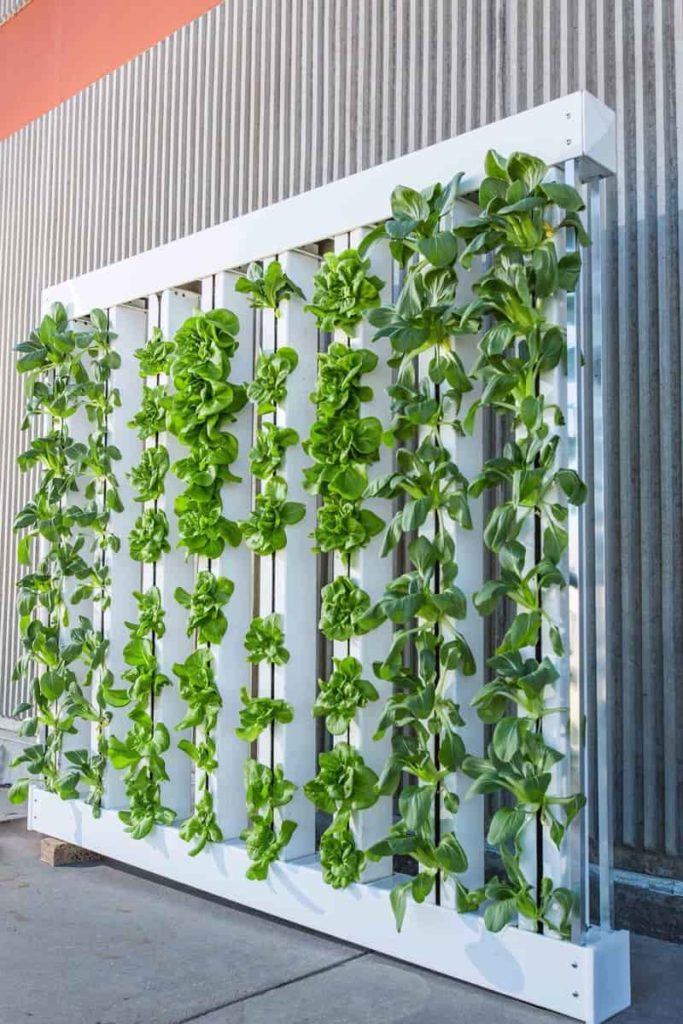Vertical farming is the process of growing crops in vertically stacked layers. Vertical farming can be a promising future food source as space can be used efficiently to grow several vegetables and fruits. Vertical farming is one way to take the controlled environment of the modern commercial greenhouse to the next level.
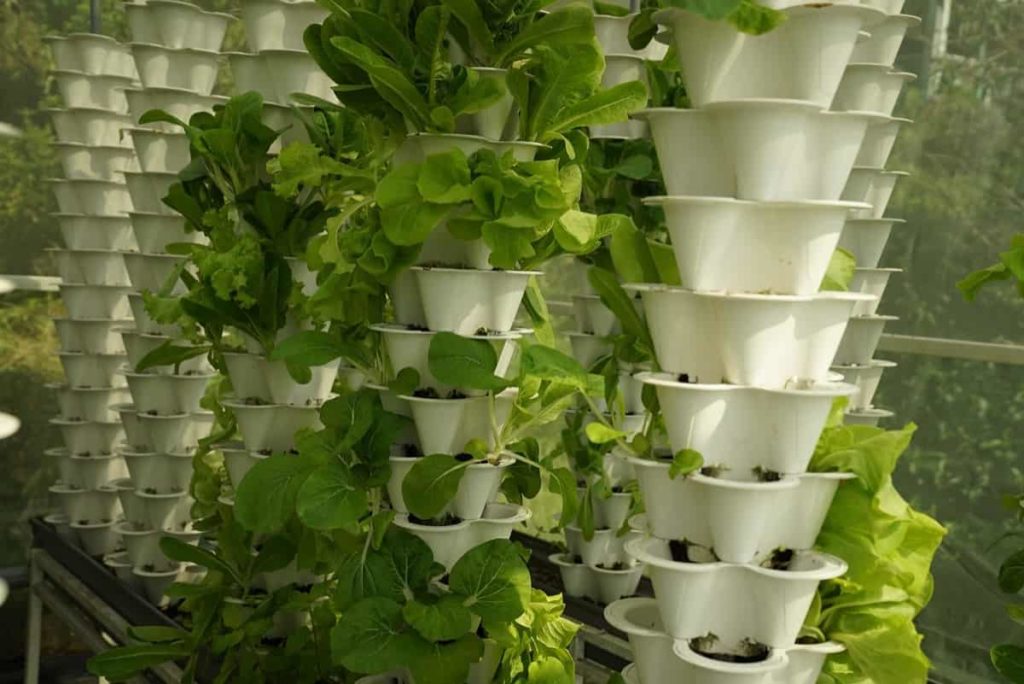
By arranging plants vertically on shelves or tall pillars, vertical farming allows up to 10 times more production for a given land area. The plants are grown in completely closed conditions, with LED lights replacing sunlight and closed-loop water recycling.
How to start vertical farming from scratch
How do you set up a vertical farm?
- It is more popular in urban areas than rural areas because it is soil-based and soil-less farming in which you don’t need much space and cities. People do not have the option of farming because the land is costly in cities. Especially in cities like Mumbai, Delhi, and Bangalore, it is almost impossible for the common man to own land for farming, so vertical farming is becoming more popular daily, especially vertical gardens at home or balconies and fences.
- Vertical systems use a variety of growing mediums to harvest their crops. Hydroponics uses a soil-free system to submerge plants in a nutrient-rich solution. Solutions must be circulated and monitored to ensure proper chemical composition. Aeroponics uses soil and little water to grow plants.
Simpls steps to set up a vertical farm
- Know Why You Farm
- Leverage Your Background
- Choose Your Crops
- Perfect Your Business Model
- Identify Your Ideal Growing Technology
- Track Resources, Input, and Output
- Develop a Marketing Strategy and Get to Know Customers
- Secure Financing
How much does indoor vertical farming cost to set up?
However, it requires only Rs. 4-5 thousand rupees if you are not starting it commercially and only using it for your family, then this amount is enough for which you need Rs. 8-10 thousand according to your requirement.
What are the advantages of vertical farming?
The advantages of vertical farming are high production in a very small area, growing small, less water consumption and fresh produce being close to where it is consumed.
- Stable crop yields – One of the main advantages of vertical farming is that it ensures fairly stable crop production. If everything is arranged correctly, it is quite easy to estimate how many vegetables and fruits can be harvested in a given period. Thus, it is easier to make long-term contracts with grocery stores and suppliers because vertical gardening will have a steady supply of crops and income streams.
- Crop yields take all year long – Another important aspect of vertical farming is that crops can be harvested year-round. Vertical gardening has a much more stable crop yield than outdoor farming, where the harvest time is only a few weeks or months. Therefore, this steady production of crops throughout the year is quite convenient as it assures the farmers that they will get a steady income.
- Pest protection – Since vertical farming is usually done indoors, plant contamination by many pests is also reduced. If workers take great care not to bring in insects, the chances of insects entering a vertical farming system are almost zero. In turn, the absence of pests will increase crop yields as plants can grow optimally without being harmed by pests.
What is the biggest disadvantage to vertical farming practices?
Vertical farming is very costly, as each step of the process, from finding the right facilities to selecting the best-performing crops, requires a lot of money. Land costs alone add a lot to initial costs, as land in urban areas is generally very expensive. Another downside to vertical gardening is that it requires a lot of energy. Since many layers of plants have to be covered with adequate light, the electricity bill will add up quickly over time. Thus, energy costs will generally be much higher with vertical farming compared to outdoor farming.
In case you missed it: 17 Key Rules for Effective Vertical Farm Management: From Planning to Reducing Production Cost
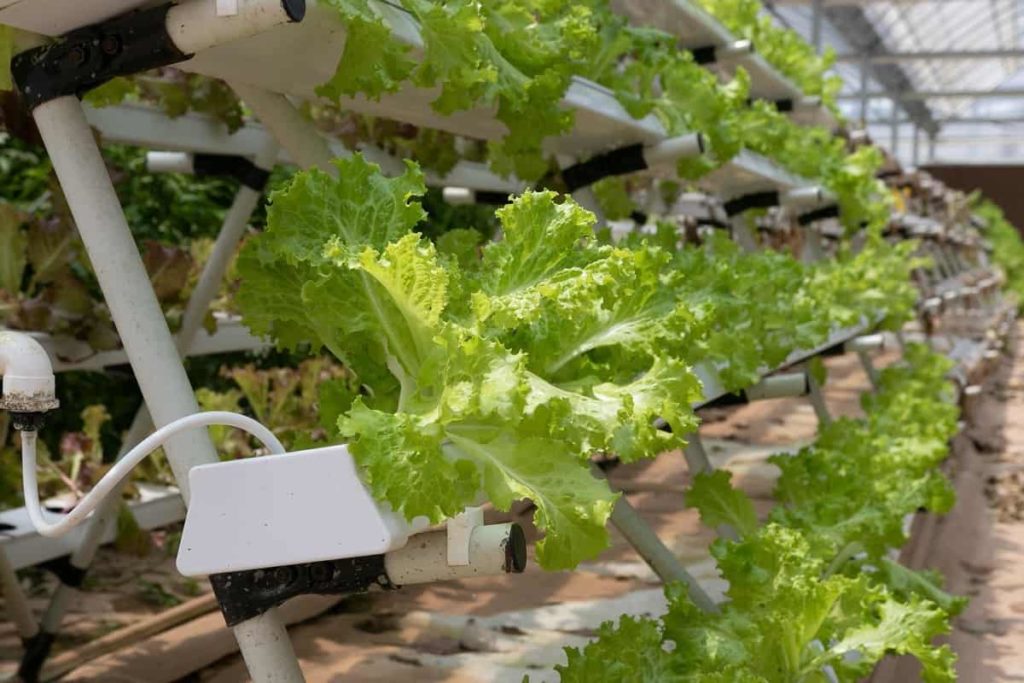
Limitations related to indoor vertical farming
- Dependence on technology: When a vertical farm loses power even for a single day, there is a possibility of huge yield loss.
- Lack of wind: Many crops need air to develop strong stems. Although this wind is usually abundant and occurs naturally outside, growing indoors without wind usually means that vertical fields are limited in what they can produce. They usually grow simple vegetables like lettuce. It also severely limits access to insects that greatly affect pollination. There are methods of manual pollination, but the process is very intensive.
What is Aeroponic vertical farming?
- Aeroponics is a system that creates a highly aerated environment around the root, which causes good root growth.
- It is the process of growing plants in an air or mist environment. It is the process of growing plants in which the root system is exposed to air.
- Aeroponic systems provide the perfect environment for oxygen and nutrients to plant roots through clean air and nutrient solutions that stimulate plant growth.
What is the best vertical farming system?
An aeroponic system is the most efficient plant growing system for vertical farms, using up to 90% less water than the most efficient hydroponic systems. Most vertical farms use either:
- Hydroponics – In this system, fruits, vegetables, and herbs are grown in nutrient-rich water.
- Aeroponics – where produce is systematically sprayed with water and nutrients. Any unused water can be recycled and used again to grow crops.
- Aquaponics – In this system, wastewater from fish is used to provide nutrients to plants and, in turn, purify the water.
What is vertical hydroponics?
- The vertical hydroponics system is the brilliant culmination of two ground-breaking modern farming techniques – hydroponic farming and vertical farming.
- Hydroponics means growing plants in a soilless medium and using water to provide a rich and balanced diet.
- Vertical farming looks to save space by using tall structures such as skyscrapers to build on a farm site in a vertical direction instead of the traditional horizontal method.
- When applying the major principles of vertical farming and hydroponics to the same form of agriculture, arrive at vertical hydroponics.
Why is vertical farming so expensive?
- Vertical indoor farms are expensive: controlled entry, well-calibrated grow lights, clean rooms, and machinery for planting and harvesting all cost more than before, not to mention the buildings required to house the farms. Machine learning, robotics, and automation are also expensive.
- However, many vertical farms have reduced facility-related costs by using existing structures, such as shipping containers, old factories, and abandoned office buildings. Alternatively, vertical farms can be constructed in barren land unsuitable for conventional agriculture.
- In many vertical farming start-ups, equipment costs put additional pressure on the budget. Most vertical farms require expensive equipment such as climate control, shelving units, LED lights, water lines, computers, etc. Nevertheless, the cost of indoor farming equipment is expected to drop dramatically as indoor farming becomes more popular as vertical farms increase rapidly.
In case you missed it: Vertical Farming in the USA: How to Start, A Step-By-Step Guide for Beginners
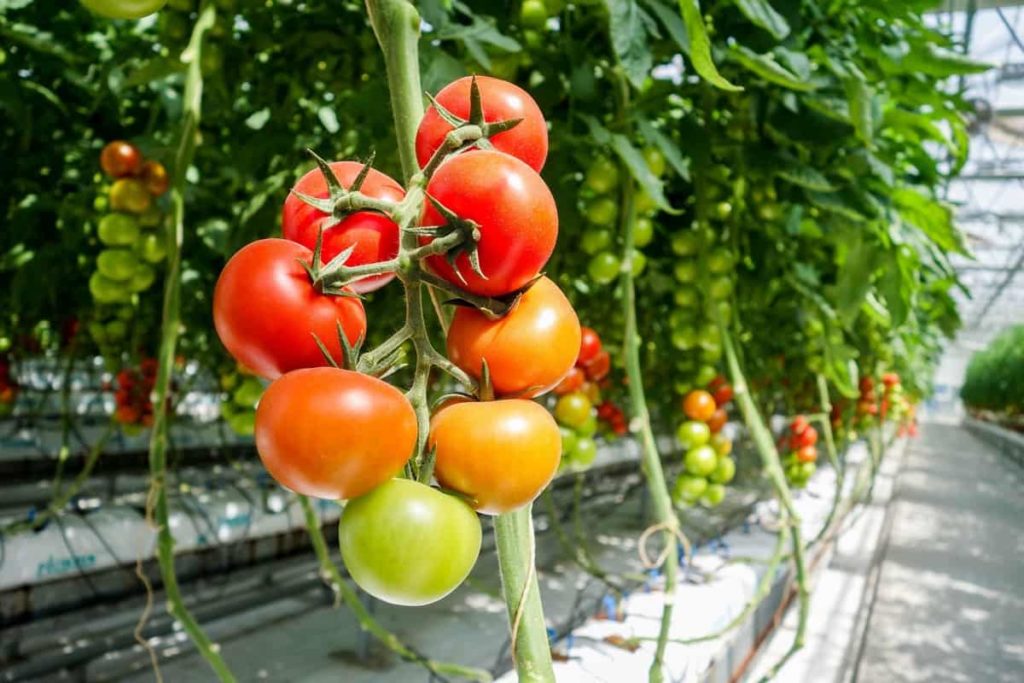
How much food can a vertical farm produce?
Vertical farms produced an average of 516 times higher yields per 10,000 square meters than paddy farms. For example, indoor farms found that vertical farms produced an average of 5.45 pounds of lettuce per square foot
Is vertical farming easy?
Creating a vertical form is relatively easy—stack crops vertically on top of each other in a closed environment. By controlling variations in temperature, humidity, light, and gases to produce, farmers can increase crop yields while reducing resources and costs from conventional farming. There are four key areas to understanding how vertical farming works:
- Physical setting
- Lighting
- Growing medium
- Sustainability characteristics.
Vertical farming’s main goal is to produce more food per square meter. To achieve this goal, crops are grown in a tower life structure. A combination of artificial and natural lights is used to keep the perfect light level in the room. Some technologies, like rotating beds, are used to improve lighting efficiency.
Aquaponic, aeroponic, or hydroponic growing mediums are used instead of soil. Peat moss, coconut husks, and similar non-soil sources are very common in vertical farming. Finally, it uses various sustainability features to offset the energy costs of farming. Vertical farming uses 95% less water.
Do vertical farms use fertilizer?
You will want to fertilize your vertical farm crops weekly or every other week using an organic fertilizer. An organic and water-soluble plant food allows you to easily add nutrients to your green wall when you water it, and it allows you to spray plants with a nutrient-rich mixture.
Is vertical farming healthy?
Although there are more, the main health benefits that come with vertical farming are fresher food, increased urban availability, reduced pollution, and no chemical use. Growing crops on vertical farming consists of the following elements.
- Temperature control
- Humidity control
- Artificial lighting
- Fertilizer and nutrient control and monitoring
Planning is necessary when starting vertical farming as a small to medium business.
Can vertical farming feed the world?
In vertical farms, all crops can be grown almost anywhere on the planet, unlike agricultural land, which must be arable and usually located far from consumers. Being closer to consumers shortens the supply chain.
Do vertical farms use sunlight?
- The vertical farming system is similar to greenhouses, where metal reflectors and artificial lighting enhance natural sunlight.
- Lighting is the most important factor in an indoor vertical growing operation. It is a major component of energy use in the system and plays an important role in plant development, including the timing of yield and maturity.
- Innovations in LED technology, including lights that emit only the frequencies necessary for photosynthesis and general improvements in energy efficiency, are reportedly driving down prices compared to the computer chip industry.
- In addition to continuing cost reductions, new systems are also being designed to make more efficient use of the light spectrum, particularly in areas full of vegetation.
Can you grow any plants with vertical farming?
Vegetables, fruits, herbs, flowers – you can grow everything (except root crops, vines, shrubs, and trees) with Tower Farms.
Is vertical farming cheaper than conventional farming?
Vertically farmed produce is more expensive than conventionally farmed goods and even most organic produce.
In case you missed it: Growing Strawberries Vertically from Scratch: Methods, Tips, and Ideas
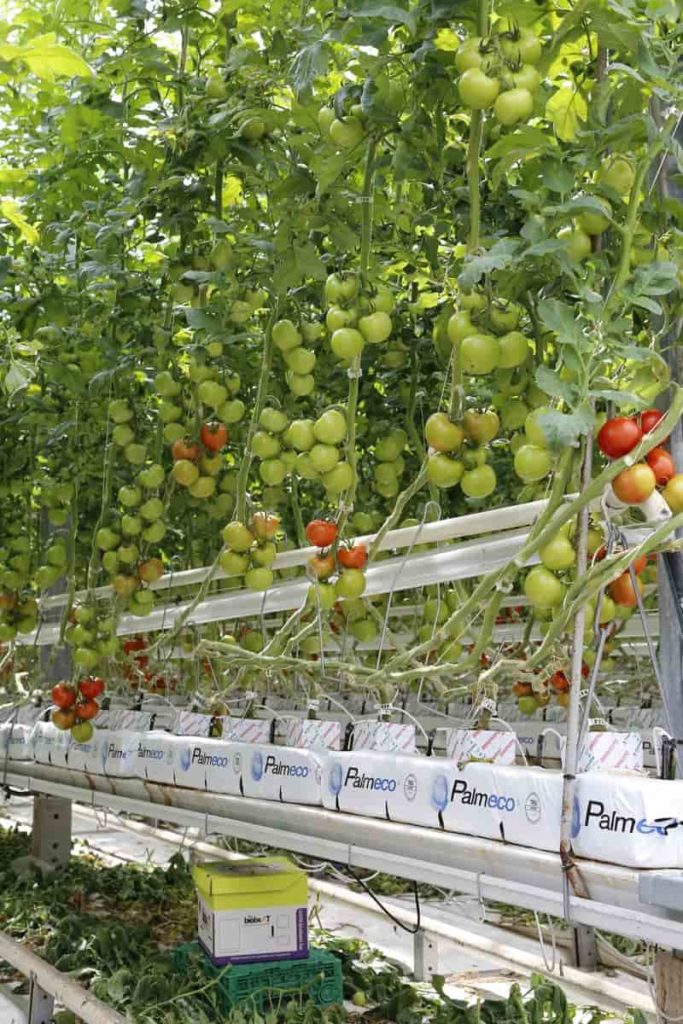
What crops to grow using vertical farming?
Selecting the right crops and cultivars is key. Vining, rambling, and spreading plants are easily trained to grow up and out of the ground, unlike the shrub variety. While bush-type crops are smaller, they take up more horizontal space on the ground. Vegetables growing in vertical farming include Pole Beans, Climbing Peas, Sweet Potatoes, Grape Tomatoes, and a wide variety of Zucchini, Cucumbers, Melons, and Squash that can be trained. Other crops are grown under vertical farming include;
- Cherry tomatoes: ‘Sungold,’ ‘Black Cherry,’ ‘Gardener’s Delight,’ Blondkopfchen’
- Cucumbers: ‘Burpee Hybrid II,’ ‘County Fair 83’, ‘Dasher 11’, ‘Saladin’
- Green beans: ‘Romano Italian’ , ‘Miraviglia Venezia’, ‘Gold of Bacau’
- Melon: ‘Sleeping Beauty’ (musk melon); ‘Delicious 51’, ‘Tigger’, ‘White Wonder’, ‘Yellow Dole’ (watermelon)
- Peas: ‘Dual,’ ‘Garden Sweet,’ ‘Maestro,’ ‘Sugar Snap,’ ‘Super Sugar Snap’
- Squash: Acorn, Delicata, Yellow Summer, Zucchini
- Lettuce (romaine, butterhead, red leaf, etc.)
- Kale
- Chard and Collard Greens
- Chives and Mint
- Basil (sweet, lemon, cinnamon, etc.)
How much electricity does vertical farming use?
However, vertical farms use more energy on average at 38.8 kWh per kg of produce than traditional greenhouses, which average 5.4 kWh per kg.
What are the materials needed to run vertical farming?
- Vertical Grow Racks
- Mobile Carriages
- Grow Trays
- Lighting
- Airflow
- HVAC
How much space do you need for vertical farming?
- A vertical farming system allows the production of more crops from the same square footage of the growing area.
- One acre of the indoor area provides a yield equivalent to at least 4-6 acres of outdoor capacity.
Is there profit in vertical farming?
The vertical system has yet to prove itself as a profitable option. Building costs for new vertical farms can range from $30 million to $50 million per site. Of course, another way in which vertical farming has a natural advantage when it comes to being more profitable than conventional farming is its ability to eliminate pest damage. As well as saving more money by not buying pesticides, it also means a much more consistent yield.
What is the most popular medium for vertical farming?
- The most popular form of vertical farming uses modular towers to grow crops in an aquaponic or hydroponic system.
- It mainly allows growers to use a volume of space instead of just one vessel.
What technology is used for vertical farming?
- Hydroponics is an important growing system used in vertical farms. In this hydroponic system, plants are grown in a soil-free nutrient solution.
- Plant roots are grown in a nutrient solution in a grow tray, so the roots are submerged in the solution.
In case you missed it: Top 20 Vertical Farming Companies in India: Best List
Does vertical farming use less water?
In general, vertical farming uses 95% less water than conventional farming. If you’re growing under average conditions, each tower will use about a gallon of water daily.
Can vertical farming be organic?
The United State Department of Agriculture (USDA) has certified that vertical farms using hydroponics systems are eligible for organic certification if they meet other requirements. It allows US-based vertical farms to expand their market and sell their products as organic.
Organic growing methods in vertical farming:
- Organic farming has received a lot of attention in the last few years. An increasing number of people are now selecting organic products for their healthy properties and to reduce their carbon footprint.
- Organic farming is about producing high-quality crops with minimal impact on the environment. Harmful synthetic chemicals like pesticides, fungicides, herbicides, and other soil and water pollutants are strictly prohibited. Farmers are advised to use organic seeds if possible and avoid using genetically modified seeds (GMOs).
- In organic farming, every process step must perfectly harmonize with natural ecosystems and habitats. Vertical farming represents a more innovative approach to traditional organic farming systems. Plants are grown indoors using automated systems such as hydroponics, aeroponics, or aquaponics, where the soil is replaced with water and nutrients or biomass waste.
What can you grow in vertical hydroponics?
- Vertical hydroponic plants can accommodate almost any fruit, or vegetable one can think of. The exception to this rule is to include root plants, as they are incompatible with this type of setup.
- More than 50 species of leafy vegetables, micro-herbs, and peppers are grown worldwide in vertical hydroponics. It includes plants such as Butterhead Lettuce, Kale, Spinach, Mint, Romaine, Basil, Lavender, Cucumber, Celery, Tomatoes, and Strawberries.
- Only vegetables such as Onions, Garlic, and Potatoes cannot be grown on vertical hydroponic farms because they are tubers and are better served on aeroponic farms.
How does vertical farming work?
In traditional soil-based farming, seeds are sown in the ground, usually in rows. These plants take acres of land to grow and are susceptible to damage from pests, pollution, and climate. Vertical farms solve all these problems. Instead of planting crops in the ground, crops are stacked vertically in trays or towers. On about an acre and a half, much smaller than the average big box store, a vertical farm can produce about 500 tons of leafy greens per year. But space isn’t the only thing vertical farms can save.
If they are inside the greenhouse, the crops will not be destroyed by the weather, regardless of the climate. These indoor farms are also largely immune to pests and pollution, so the need for dangerous pesticides is minimal. In a vertical hydroponic farm, plants are grown in water instead of soil, allowing growers to provide nutrients directly to the plant’s root system and eliminating concerns about soil degradation.
The water is recycled repeatedly through the system, meaning 98 percent less water use than in conventional farming. Because vertical farms have such a small footprint, they can be placed in urban areas where food production is limited. It allows farmers to provide fresh, healthy crops to vulnerable populations with little food loss due to poor transportation or damage caused by extreme weather. Most crops can go from plant to consumer in less than two days, so consumers get the freshest vegetables and fruits at their peak.
Is turmeric vertical farming profitable?
They have planted turmeric in galvanized tray system by making a sculpture on the ground in a greenhouse for contract farming under hi-tech vertical farming. This type of farming will yield 500 to 800 tonnes per acre. It means they will earn around Rs. 3 crores to Rs. 3.5 crore per acre of land.
In case you missed it: Vertical Farming In India, How To Start, Crops
Why do vertical farms fail?
- They try to do many things at once. A drawback of many vertical farms is that they are trying to grow food for the market while producing and selling the technology used to grow their food. New farmers must understand that they have one goal: to sell good food.
- New farmers must understand that they have one goal: to sell good food. The more time spent trying to develop a system, the less time a grower has to delight their customers with fresh food. The same goes for decisions about the tools to accomplish that goal.
- Unfortunately, dozens of hard-working farmers invest their time and financial resources into half-baked ideas that fail in a vertical farm, taking their money and dreams of starting a vertical farm simultaneously.
Conclusion
The vertical farming system involves growing plants indoors, which is why it is sometimes known as indoor farming. Instead of sunlight and rain, vertical farm systems use LED lighting and controlled growth and nutrition systems. Plants are arranged vertically in layers, so many farms look like warehouses with large shelving units. This concept involves cultivating crops on vertical farming and steps to set up vertical farming.
- Types of Pesticides Used in Agriculture: A Beginner’s Guide
- Economical Aquaculture: A Guide to Low-Budget Fish Farming
- 15 Common Planting Errors That Can Doom Your Fruit Trees
- How to Make Houseplants Bushy: Effective Tips and Ideas
- Innovative Strategies for Boosting Coconut Pollination and Yield
- Pollination Strategies for Maximum Pumpkin Yield
- The Complete Guide to Chicken Fattening: Strategies for Maximum Growth
- Natural Solutions for Tulip Problems: 100% Effective Remedies for Leaf and Bulb-Related Issues
- Revolutionizing Citrus Preservation: Towards a Healthier, Greener Future
- Natural Solutions for Peony Leaf and Flower Problems: 100% Effective Remedies
- Maximizing Profits with Avocado Contract Farming in India: A Comprehensive Guide
- Natural Solutions for Hydrangea Problems: 100% Effective Remedies for Leaf and Flowers
- The Ultimate Guide to Choosing the Perfect Foliage Friend: Bringing Life Indoors
- From Sunlight to Sustainability: 15 Ways to Use Solar Technology in Agriculture
- The Ultimate Guide to Dong Tao Chicken: Exploring from History to Raising
- The Eco-Friendly Makeover: How to Convert Your Unused Swimming Pool into a Fish Pond
- Mastering the Art of Delaware Chicken Farming: Essentials for Healthy Backyard Flocks
- 20 Best Homemade Fertilizers for Money Plant: DIY Recipes and Application Methods
- How to Craft a Comprehensive Free-Range Chicken Farming Business Plan
- Brighten Your Flock: Raising Easter Egger Chickens for Beauty and Bounty
- How to Optimize Your Poultry Egg Farm Business Plan with These Strategies
- Subsidy for Spirulina Cultivation: How Indian Government Schemes Encouraging Spirulina Farmers
- Ultimate Guide to Raising Dominique Chickens: Breeding, Feeding, Egg-Production, and Care
- Mastering the Art of Raising Jersey Giant Chickens: Care, Feeding, and More
- Ultimate Guide to Raising Legbar Chickens: Breeding, Farming Practices, Diet, Egg-Production
- How to Raise Welsummer Chickens: A Comprehensive Guide for Beginners
- How to Protect Indoor Plants in Winter: A Comprehensive Guide
- Ultimate Guide to Grow Bag Gardening: Tips, Tricks, and Planting Ideas for Urban Gardeners
- Guide to Lotus Cultivation: How to Propagate, Plant, Grow, Care, Cost, and Profit
- Agriculture Drone Subsidy Scheme: Government Kisan Subsidy, License, and How to Apply Online
- Ultimate Guide to Raising Araucana Chickens: Breed Profile, Farming Economics, Diet, and Care
- Bringing Hydroponics to Classroom: Importance, Benefits of Learning for School Students
- Ultimate Guide to Raising Polish Chickens: Breed Profile, Farming Economics, Diet, and Care
- Ultimate Guide to Raising Australorp Chickens: Profile, Farming Economics, Egg Production, Diet, and Care
- Silkie Chicken Farming: Raising Practices, Varieties, Egg Production, Diet, and Care
- Sussex Chicken Farming: Raising Practices, Varieties, Egg Production, Diet and Care
